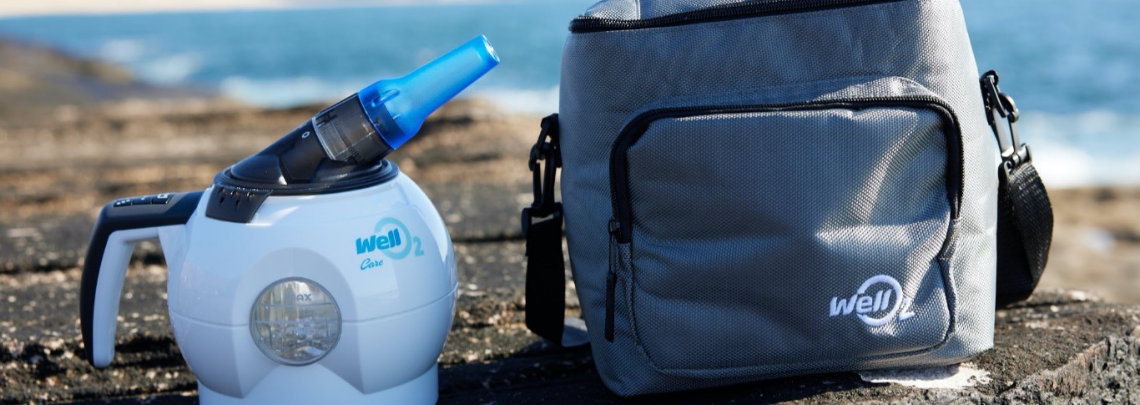Seven tips to be “lung fit” this summer
The end of year chaos is upon us again. With ‘summer ready’ bodies battling COVID-kilos, fire and flood plans updated and friends asking each other RUOK?, there is already a lot to think about ahead of the “busy-ness” of the upcoming “silly season”. Yet this year, many Australians are also considering how they can increase their lung fitness ahead of another summer bushfire season.
This time last year, Australians were bracing themselves for the onslaught of unprecedented bushfire events, which was quickly followed by a global pandemic. These events had direct impacts on the respiratory systems of many Australians.
As a means to being better prepared for inevitable smoke-filled days, the simple art of breathing has become a focus, with Google reporting health-related searches for “breathing exercises” steadily increasing over the past year.
A white paper, released today, takes a qualitative look at how Australians, especially those predisposed to common respiratory issues such as asthma and congestion, have been considering ways to improve their lung health at home.
Lung health and attitudes to wellness: An Australian perspective1, surveyed 55 Australians, noting their concerns, views and behaviours over 12 months from August 2019. The report revealed that participants during this period were affected by several factors – including air pollution caused by bushfire smoke, pandemic-associated lockdowns with limited access to physical activities, chronic and seasonal respiratory conditions and a general sense of being less “well” in general. Almost 70% of trial participants were generally more concerned about their overall respiratory health, with a similar number believing their overall fitness and wellness had declined.
“Prior to events such as catastrophic bushfires and COVID-19, people didn’t truly appreciate the important role our lungs play in keeping us healthy. People took for granted their ability to simply breathe,” said Emeritus Professor Anssi Sovijärvi, Department of Clinical Physiology, Helsinki University Central Hospital in Finland.
One of the clinical researchers behind the adoption of the international Global Lung Function Initiative (GLI)2, Dr Sovijärvi has interests in asthma and allergic rhinitis, chronic obstructive pulmonary disease (COPD), and environmental pollutants.
“Once pollution particles, like the PM 2.5 particles (often found in smoke from active and smouldering fires), enter the lungs they cause irritation. This can have a real impact on respiratory health and can lead to an increase in the use of medications, hospital admission and more serious health concerns3,” Dr Sovijärvi explains.
“Lung fitness is something that changes with age – younger children are still developing their airways and tend to breathe more air relative to their body weight, while older adults are more likely to have reduced lung functions,” he said.
According to Dr Sovijärvi, seven simple things can be done to improve lung functionality as we age:
- Regular use of vaporised steam to “spring clean” the respiratory system
- Breathing resistance exercises – breathing in and out against pressure
- Regular sauna visits
- Good general hygiene to limit your exposure to the common cold and influenza viruses
- Maintaining general fitness and a healthy weight – aerobic sports such as walking, jogging, cycling or swimming are ideal
- Regular wellness activities – such as Yoga, Pilates and dedicated Breathing classes
- Singing – a fun way to exercise your lungs (but while maintaining social distancing of course)
He recommends that Australians, especially those with pre-existing respiratory problems such as asthma and bronchitis, look to undertake regular breathing exercises to help strengthen the lungs. He notes that Respiratory Muscle Training – or RMT – is a trusted pressure-based physiotherapy technique that has been shown to improve lung function.
Dr Sovijärvi is also encouraged by the growing clinical interest in using steam to help loosen congested lungs and help “cough up” trapped irritants, with a new study in Finland looking at an RMT/steam combination in conditions such as asthma and COPD.4,5
“Steam has been used to loosen tight congested chests for years, and while not every Australian has the easy access to saunas as we do in Finland, there are now cost-effective ways to bring the traditional benefits of Nordic steam into your home,” said Dr Sovijärvi.
“I have seen how the WellO2, a Finnish innovation that combines traditional steam with gentle pressure, can deliver an easy form of home-based Respiratory Muscle Training.”
While the WellO2 is a wellness rather than a medical product, recent product trials by a group of Australians are showing positive results that reflect the results from previous European reviews.
